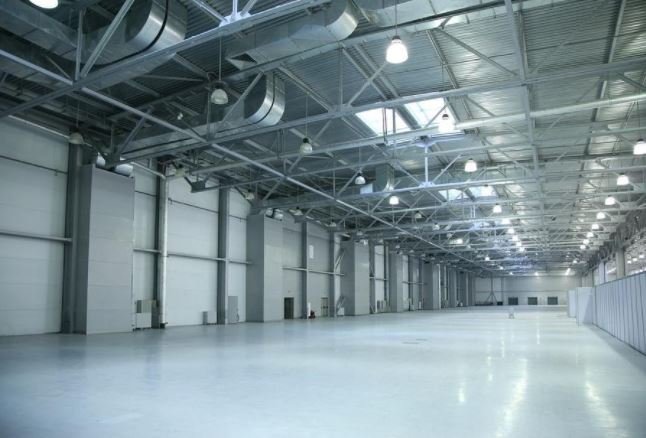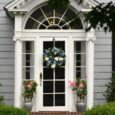 Industries are large indoor spaces with high ceilings extending above 45 feet. In such places, most conventional fixtures fail to supply enough and uniform lighting across every inch and corner. High bay led lighting is the advanced technology by LED manufacturers which is capable of producing fixtures deemed appropriate for providing uniform illumination across the entire space, while taking into account all the processes and objects placed within.
Industries are large indoor spaces with high ceilings extending above 45 feet. In such places, most conventional fixtures fail to supply enough and uniform lighting across every inch and corner. High bay led lighting is the advanced technology by LED manufacturers which is capable of producing fixtures deemed appropriate for providing uniform illumination across the entire space, while taking into account all the processes and objects placed within.
What are High bay luminaires?
High bay light fixtures are specifically engineered luminaires for high ceiling areas. These fixtures are available in two main designs: Linear and round high bays. Both design features comply with various needs of high ceiling areas i.e, industries, warehouses, conventional centers, etc.
The frame or housing of the high bay light fixture is made up of aluminum which is resistant to all external factors like moisture, dust, chemical, toxins. It is tough and makes the fixture compatible in environments where older fixtures failed to cope up with either temperature changes or exposure to any accident.
LED high bay fixtures come in three basic designs:
- Integrated LED
- LED lamps
- Retrofit lamps
These options allow the investor to go with the most compatible design according to their needs such as refurbishing or installing these fixtures from scratch.
Tips and reasons to install LED high bay lights
There are several things to consider when purchasing LED high bay lights for any project.
A few of them are as follows:
1. Produce a layout
It is highly essential to hire a lighting contractor to compute this for any industrial space. Large spaces with high ceilings have a lot of open space which requires uniform bright light. Lighting contractors can help create a lighting layout adjusted to the needs of the facility. A layout helps in several ways such as:
- Determining the total illumination requirement
- Determining the type of fixture needed
- Determine the number of fixtures needed
- Determine the sizing and placement of the fixture
These are essential parameters to ensure a safe and effective installation process that lasts for a lifetime while being functional round the clock.
2. Select the design
The layout design is essential in order to determine which type of fixture fulfills the criteria and which design option is more sustainable. For example, Linear high bays are excellent for general lighting in an open space where other processes are carried out on large scale.
But within the same space, there could be zones that require extra light for carrying out tasks pertaining to details. Here the general light can be aided with smaller UFO high bays for more attention to detail.
The lights can be mounted at different heights for a more effective spread. Each design supports two mounting options:
- Surface mounting
- Suspend mounting
3. Choose the reflector type
Similarly in warehouses, the raw materials are assorted and arranged in shelves extending above eye levels, High bay lights are paired with different reflectors which help in accentuating the light. They focus and adjust the beam angle at different eye levels for enhanced visibility. In this way, light is not wasted in the surroundings.
The designs are exceptionally well-performing and suited for various applications across different facilities. A few of the common reflectors are:
- Aluminum reflectors
- Prismatic reflectors
- Polycarbonate reflectors
These reflectors are built of high-quality and durable material which efficiently restricts and regulates heat and light energy.
4. Choose the color temperature
LED high bay lights to produce glare-free powerful bright light. These lights are available under several customizations to create a comforting or pleasant look for people working in that area. LEDs are capable of producing light in different color temperatures. It is specified on a Kelvin scale ranging from 3000K to around 6000K. The light produced on this spectrum can be warm yellow, white or daylight-like light.
Reasons to install LED high bay lights
LED high bay lights are also available in retrofit designs which is quite a cost-effective way to switch up the lighting infrastructure. But there are several drawbacks to that in case the pre-existing infrastructure gives up. This can be a significant drawback when it comes to an industrial setup as it hinders the processes and causes a lot of delays as well as high labor and maintenance costs.
Due to which it is essentially preferred to replace the existing layout with newer LED high bay fixtures. The reasons are simple:
1. They are efficient
LED high bay lights are quite efficient when it comes to energy management. These fixtures are capable of producing bright light but still have a low energy consumption rate as compared to traditional lamps like HID or HPS lamps. Moreover, the ratio of energy wasted as heat is still lesser than any other fixture. They are said to be 80% efficient and have a built-in heatsink which efficiently dissipates heat in the surrounding without causing the fixture to malfunction.
2. Higher lumen output
The lumen output is a measure of brightness. LEDs have a higher lumen output despite the wattage rating. This means a 100W high bay is capable of producing more lumens than a 100W HID lamp. This subsequently decreases the number of fixtures required to reach the total illumination requirement.
3. Low maintenance costs
These fixtures are manufactured keeping in mind all the concerns related to a fast-paced environment where several tasks are carried out involving heavy machinery, chemicals, etc. They are resistant to dust, chemical, water, moisture, etc due to the aluminum frame which also allows several mounting options. These fixtures have a warrantied lifespan of over 11 years, during which they barely malfunction. This subsequently reduces a lot of money and energy wasted in the replacement and maintenance of the fixtures.
4. Eco friendly
LED high bay lights are quite eco-friendly and they are safe to use as they operate on green lighting technology which produces amiable light. They do not contain any harmful chemicals like fluorescent lamps which contain mercury and aren’t exactly safe to recycle or reproduce.




